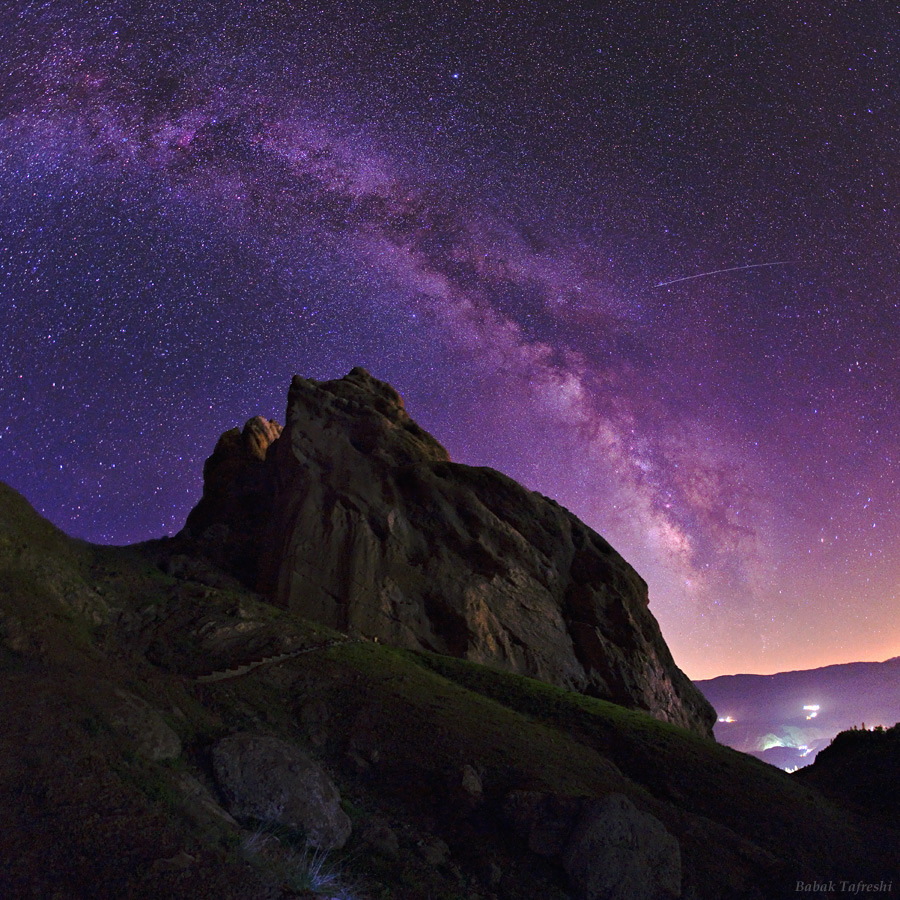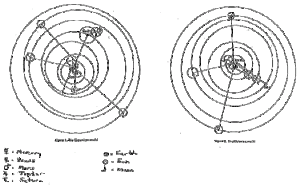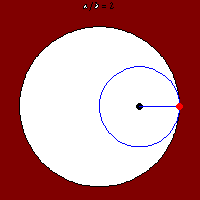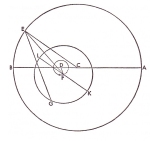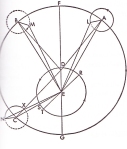In 1971 and 1972 I traveled parts of the Silk Road on my way from Europe to Syria and later to Afghanistan. The road stretched for thousands kilometers leading caravans across scorching deserts, picturesque oases, and mountain passes but obviously travelling through the USSR was not possible at this time. Many of cities and entire civilizations prospered and decayed along the way. The cities of the Silk Road witnessed numerous devastating wars, destructions, fires, famine and death. For centuries those dusty caravan roads were traveled by merchants and scientists.
The Silk Road originated in Chang’an, the ancient capital of China, and went along the northern Tien-Shan to Dunhua, the city near the Great Wall of China. There the single road split bordering the Taklamakan desert from the north and the south. The northern way went through Turfan to the Ili river valley. The Middle road (the so-called Southern way) led from Zhang Qian to the southern coast of Lake Issyk Kul- via Khotan and Yarkand, and reached Bactria (northern Afghanistan). There the Southern route split in two other roads: one followed to India, the other to the West and Merv where it merged with the Northern route. Further it passed via Nisa, the capital Parthia, Iran, Mesopotamia, Bagdad, went to Damascus and reached the Mediterranean. More about routes of The Silk Road. In the Middle Ages the Venetian merchant Marco Polo named the caravan routes silk roads. The German researcher Ferdinand Richthofen who coined the term the Great Silk Road in his fundamental work, “China”, in 1877.
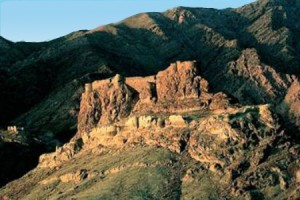 The story of a Persian Astronomer, an Mongol General, a fortress and an observatory started in Alamut north of Tehran back to the late 13th century and ended in Maraghah City located to the south of Mt. Sahand, what is now northwestern Iran. From the 14th century onwards have left little but ruined walls of this once famous contribution to science. It is a story of science and empires of religion and superstition.
The story of a Persian Astronomer, an Mongol General, a fortress and an observatory started in Alamut north of Tehran back to the late 13th century and ended in Maraghah City located to the south of Mt. Sahand, what is now northwestern Iran. From the 14th century onwards have left little but ruined walls of this once famous contribution to science. It is a story of science and empires of religion and superstition.
Along the Silk Road – Alamut and Maragha
Science is international and trans-religious. Science is like building a house. Each builder puts up a stone. These stones do not have religion, even if the person has. It’s irrelevant who put up the next block. Kepler was Protestant working for an (kind of) catholic general. Hulagu Khan, the grandson of Genghis Khan, hardly a Muslim, but from his mother Nestorian and later Buddhist fought Islam. He built this observatory in Maragha with the help of an Persian astronomer, named Al Tusi. The observatory at Maragha was built to accommodate al-Tusi who changed three times his religion and worked eagerly for the destroyer of the Islam Empire. Let’s go back to the history of those two men.
The General Hulagu Khan
The Mongol military leader Hulegu Khan believed as Wallenstein to the advice of astronomers (who were also astrologers), especially of Nasīr al-Dīn al-Tūsī who was a genius like Kepler. Tūsī then served under the Mongols as an advisor to Īlkhānid ruler Hūlāgū Khan, becoming court astrologer. Hulagu Khan, (1217 – 1265), was a Mongol ruler who conquered much of Southwest Asia. Son of Tolui and the Kerait princess Sorghaghtani Beki (both Nestorians), he was a grandson of Genghis Khan, and the brother of Arik Boke, Möngke Khan and Kublai Khan. Hulagu’s army greatly expanded the southwestern portion of the Mongol Empire, founding the Ilkhanate of Persia, a precursor to the eventual Safavid dynasty, and then the modern state of Iran. Under Hulagu’s leadership, the Mongols destroyed the greatest center of Islamic power, Baghdad, and also weakened Damascus, causing later a shift of Islamic influence to the Mamluks (slaves who formed an elite army under Islamic control) in Cairo. It was also in Hulagu’s reign that historians switched from writing in Arabic to writing in Persian.
The Astronomer Nasir al-Din al-Tusi
Nasir al-Din al-Tusi (1201 – 1274) of Persian origin was one of the greatest scientists, mathematician, astronomer and philosopher of his time. He was born in Tus in Khurasan (now Iran) to a family whose notion of learning was the study of religious law and how it was practiced. However, his jurist father encouraged his son to study the philosophical and natural sciences. Educated first in Tūs, where his father was a jurist in the Twelfth Imam school, the main sect of Shīite Muslims, al-Tūsī finished his education in Neyshābūr, about 75 kilometers (50 miles) to the west, an important center of learning, where he studied philosophy, medicine and mathematics and earned a reputation as an outstanding scholar. Nasir al-Din al-Tusi tried to travel to Baghdad to pursue his studies and to join the caliph’s court, still a young man when the Assassins made him an offer he couldn’t refuse. In about 1227 the Ismāiīlīte governor Nādir al-Dīn Abd al-Raiīm granted al-Tūsī “sanctuary” in his mountain fortresses in Khorāsān. Al-Tusi became astrologer in the castle of Alamut, a fortress which was the headquarters of the terrorist Assassins.
The fortress Alamut
Found in the central Alborz Mountains of Iran, Alamut Castle was built into the rock in the 9th century. The name means Eagle’s Nest. The capital Tehran of today, is over 100 kilometers away to the southwest. The natural geographical features of the valley surrounding Alamut largely secured the castle’s defence. Positioned atop a narrow rock base approximately 180 meters above ground level, the fortress could not be taken by direct military force. To the east, the Alamut valley is bordered by a mountainous range called Alamkuh (The Throne of Solomon) between which the Alamut River flows. Under the residence of Nasir al-Din al-Tusi Alamut became also a center for libraries and education.
Hulagu Khan captured and destroyed the Hashshashin stronghold at Alamut in present-day Iran as part of the Mongol offensive on Islamic southwest Asia. When the armies of Halagu, the grandson of Genghis Khan, massed outside the city in 1256, al-Tusi had little trouble deciding where his loyalties lay. In 1256 Al-Tusi gave away secrets of the castle to the invading Mongol army. The invading Mongols led by Hulagu Khan, grandson of Genghis Khan captured Alamut. Al-Tusi joined Halagu and accompanied him to Baghdad, which fell in 1258. Quite interested in the sciences, Hulagu treated Tusi with respect and appointed him one of his ministers and advisor. Later, while serving as an administrator of Auqaf, al-Tusi persuaded Hulagu to build an observatory at Maragha, with al-Tusi as its director.
The observatory at Maragha
So the astronomical observatory was built in 1259 by the astrology-addicted Hulagu Khan at the behest of his Persian minister who was assisted by Chinese astronomers. Like many other aristocrats Hulagu was fascinated by astrology. Along with bone divination, stars were often referred to as signs and omens by the Mongols. The observatory became operational in 1262, lasted and stopped to function within 50 years. In a citadel-like area stood a four-story circular stone building with a diameter of 28 meters. The mural quadrant to observe the positions of the stars and planets was aligned with the meridian. This meridian served as prime meridian for the tables in Zij-e Ilkhani, as the meridian applied today passes the Royal Greenwich Observatory. The Maragha observatory consisted of a series of buildings occupying an area 150 meters in width and 350 meters in length. One of these buildings was a dome that allowed the sun’s rays to pass through. Astronomers from across Persia, Syria, Anatolia and even China were gathered at the observatory, and the names of at least 20 of them who worked at the observatory are known. It is believed that several Chinese astronomers introduced several Chinese methods of computation. The observatory had a library with some 400,000 books on a wide range of scientific topics and a school for training specialists in mathematics, science and philosophy.
 It was here that al-Tusi did some of his most important work, using the rich library to write on logic, philosophy, mathematics and astronomy with many other scholars. It had various instruments such as a 4 meter wall quadrant made from copper and an azimuth quadrant which was the invention of al-Tusi himself. Al-Tusi also designed other instruments for the Observatory. A number of prominent astronomers worked with Tusi there, such as Muhyi al-Din al-Maghribi, Mu’ayyid al-Din al-’Urdi, from Damascus, and Qutb al-Din al-Shirazi. It also attracted scholars from the Byzantine Empire, most notably Gregory Choniades, who studied under Shams ad-Din al-Bukhari, an astronomer who worked at the famous observatory under al-Tusi. The observatory also attracted scholars from beyond the Byzantine and Islamic world, such as Hulagu’s Chinese astronomer Fao Munji, whose Chinese astronomical experience brought further improvements to the Ptolemaic system initially used by Tusi. After his death, his son was appointed the director of the institution, but it was later abandoned by the middle of the 14th century (!).
It was here that al-Tusi did some of his most important work, using the rich library to write on logic, philosophy, mathematics and astronomy with many other scholars. It had various instruments such as a 4 meter wall quadrant made from copper and an azimuth quadrant which was the invention of al-Tusi himself. Al-Tusi also designed other instruments for the Observatory. A number of prominent astronomers worked with Tusi there, such as Muhyi al-Din al-Maghribi, Mu’ayyid al-Din al-’Urdi, from Damascus, and Qutb al-Din al-Shirazi. It also attracted scholars from the Byzantine Empire, most notably Gregory Choniades, who studied under Shams ad-Din al-Bukhari, an astronomer who worked at the famous observatory under al-Tusi. The observatory also attracted scholars from beyond the Byzantine and Islamic world, such as Hulagu’s Chinese astronomer Fao Munji, whose Chinese astronomical experience brought further improvements to the Ptolemaic system initially used by Tusi. After his death, his son was appointed the director of the institution, but it was later abandoned by the middle of the 14th century (!).
The observatory hill, once on the outskirts of Maragheh, is now surrounded by the urban texture. The observatory is on the topmost part of the hill. Its geometric remains are now protected under a metal-framed dome. It was once considered one of the most prestigious observatories in the world. The Maragheh Observatory was the largest observatory in its time, consisting of a series of buildings occupying an area of 150 meters in width and 350 meters in length. One of these buildings was a dome which allowed the sun’s rays to pass through. Among other main Mithraism temples in Maragheh, we can refer to hand made caves of the Khajeh Nasir Din observatory hill. Because Mithraism temples were built in caves or underground, they were regarded as proper places for Sufi monasteries.
As a result, it was in this era that different Sufi orders spread and new monasteries were built there.
A visit to the ruins of the observatory later inspired Ulugh Beg to build 1428 his own large observatory at Samarkand to continue the astronomical research of the Maragha school. This great astronomer, was a grandson of Tamerlane, a Mongol Conqueror who restored the Mongol Empire and himself a descendant of a celebrated Mongol Emperor soldier, Genghis Khan. At that time, the Mongol leaders had converted already from shamanic religions, Buddhism or Nestorianism to Islam. In the end observatories failed to take root in the Islamic dominated countries. It may be fair to assume, that the orthodox Islamic belief system would have been too rigid to adjust to their findings connecting astronomy with astrology which was (like in Christianity) heresy.
Historical Context
The Silk Road did not only promote commodity exchange but also cultural. For example, Buddhism as one of the religions of theKushan kingdom reached China. Together with merchant caravans Buddhist monks went from India to Central Asia and China, preaching the new religion. Buddhist monumentswere discovered innumerous cities along the Silk Road. In the first centuries of Christian era Manicheism (originated in the 3rd century in Iran and was a synthesis of Zoroastrism and Christianity) and Christianity (Nestorians) penetrated from the Near East to Central Asia and further to China. In the 13th century the Silk Road was the route for the new wave of Christian doctrine dissemination connected with the activity of Catholic missions. Warriors of Arabian caliphate brought Islāmic doctrine in the 7th century and the Mongolian travelled along the Silk Way in the 12th and 13th century the other way. The Silk Road was not only the source of goods but also information on their making, i.e. technologies. In particular, the ways of silk, stained glass, paper, books, gunpowder and guns production.
Agents of transmission
In the late 13th century A.D., Gregory Chionades travelled from Byzantium to Persia to study mathematics and astronomy under Shams ad-Din al-Bukhari, who was associated with the Maragha school of Nasir al-Din al-Tusi. Chioniades translated many works from Arabic and Persian into Greek, and is probably the person responsible for introducing such Persian innovations as the so-called “Tusi Couple” to the West. The transmission of Tusi’s work from Iran to the West is discussed in Otto Neugenauer’s History of Ancient Mathematical Astronomy. Choniades later translated the Zij-i Ilkhani into Byzantine Greek and took it to the Byzantine Empire. Al-Tusi’s deftness and ideological flexibility in pursuit of the resources to do science paid off. The road to modern astronomy, winds from Athens to Alexandria, Byzanz, Baghdad, Damascus and it was traveled not just by astronomy but by all science. In the end the observatories and science failed to take root in the Islamic dominated countries. It may be fair to assume, that the orthodox Islamic belief system would have been too rigid to adjust to their findings. Furthermore Islam (as Christianity) was connecting astronomy with astrology, which was heresy. Western Renaissance thinkers later sought out in Europe’s monastic libraries and this crumbling Byzantine Empire and Greek and Arabic works of natural sciences, philosophy and mathematics. The transmission of the Arabic, Persian and Indian astronomy (and astrology),did indeed exist, and was important but used many routes.
The fall of the Western Roman Empire
After the fall of the Western Roman Empire in the late 5th century, the Byzantine and Persian Empires dominated the world scene. In Western Europe books were made using parchment which made them enormously expensive. In the eight and ninth centuries the Almagest was translated first into Syriac. Jews and Christians participated in the state of Dhimmni, significantly to art, medicine and philosophy, which endured for at least 500 years and spread from Spain to Persia. By the end of the 11th century AD, the Golden Age was over for many reasons including political/economic stagnation and foreign attacks. The great families who supported the translation movement and promoted advancement of science and philosophy in Persian, Byzantine and other territories were eradicated. The Muslim schools were fully established and were dominated by the fundamentalists where political ideology emphasized fate over reason. The Hellenistic cultures of Egypt, Syria and the Holy Land with its’ Greek and Syriac elements and the Byzantine (Turkey) did not survive. They lost their language and their culture of scientific tradition and enquiry. Persian culture partially survived but empirical knowledge and scientific traditions were lost. Astronomy like other branches of empirical science was virtually vanished and like medicine was only revived in the 20th century.
The Rise of the Islam
Commanded by the Koran to conquer and utilize all resources, and inspired by a treasure trove of ancient Greek learning, Muslims took over a Syrian, Jewish and Christian intellectuals and knowledge. Later the Chinese and Indian Science was adopted. The Arabic language must be used as official language of the oppressors. The rise of Arabic to the status of a major world language is inextricably intertwined with the rise of Islam.
When Muhammad’s armies swept out from the Arabian Peninsula in the seventh and eighth centuries, annexing territory from Spain to Persia, they also annexed the works of Plato, Aristotle, Democritus, Pythagoras, Archimedes, Hippocrates and other Greek thinkers. The largely illiterate Muslim conquerors turned to the local intelligentsia to help them govern. Although the Babylonians, Indians and Egyptians had astronomical observatories, those founded under Mongol (operated by Persian, Indian and Chinese) rulers in Maragha and Samarkand were sophisticated, equipped with an impressive array of astrolabes, sundials, sextants, celestial globes and armillary spheres. Muhammad, the prophet entrusted by God to deliver the Islamic message, Arabic had become the official language of a world empire whose boundaries stretched from the Oxus Riverin Central Asia to the Atlantic Ocean, and had even moved northward into the Iberian Peninsula of Europe.
Science Achievements
al-Tusi’s Maragha in Alamut
Although al-Tusi later said he had been held in Alamut against his will, al-Tusi thrived there, publishing works on astronomy, ethics, mathematics and philosophy that marked him as one of the great intellectuals of his age.
al-Tusi’s Maragha school
Al-Tusi’s Maragha school had a library with some 400,000 books on a wide range of scientific topics and a school for training specialists in mathematics, science and philosophy. Al-Tusi enhanced the Ptolemaic model, however, it remains a fact that the Maragha school never made the big leap to heliocentric system of Copernicus not to speak the first physical correct and accurate model of Kepler. [Toby E.Huff(1993)].
To clarify a current and often copied myth, the influence of the Maragha school, say on Copernicus remains speculative, since there is no documentary evidence to prove it and even if it were, it was negligible to Copernicus’ (see below) and irrelevant to Kepler’s achievements . But Al-Tusi was an outstanding Persian scholar on his own rights, however, who wrote around 150 books in Arabic, Persian, and Turkish, with sixty-four treatises known to have survived. Many were consolidated accounts of what others had previously written. But he also made many original contributions, most particularly in mathematics. He was the first to treat trigonometry as a separate science, rather than just a set of tools for astronomy. He edited the definitive Arabic versions of the works of Euclid, Archimedes, Ptolemy, Autolycus, and Theodosius. His most famous astronomical work is the four-volume Al-Zij-Ilkhani (Astronomic Tables of Ilkhan), dedicated to Hulagu Khan. It is an accurate table of planetary movements, based on the research carried on at the Maragha Observatory. Al-Tusi’s main contribution to logic is contained in The Ground for the Acquisition of Knowledge. Al-Tusi’s commentary on Ptolemy’s Almagest, called the Tadhkira fi ilm al-Haya (“Memoir on Astronomy”) is a most thorough discussion of Ptolemaic astronomy.
The Zij-i Ilkhani tables
The result of his astronomical observations and calculations were compiled in the famous tables of the Zij-i Ilkhani originally in Persian. A range of evidence leads to the assumption, the nature of the “Chinese” calendar had been brought to Iran by this Chinese Taoist Fu Mengchi who accompanied his ruler Hulegu Khan. He informed Tusi of the calendar, which Tusi described in the Zij-i Ilkhani. The Chinese calendrical system was then included in the Zij of Muhyi al-Din Maghribi in the period immediately thereafter, and it was practiced only among the Mongol ruling class and their Buddhist servants, who were called “Uighur.” In reflecting on this social situation, Muhy i al-Din labeled the “Chinese” calendar as the “Chinese-Uighur” calendar, and this title succeeded to the later zijes, one of which became the first focus for analysis of the “Chinese” calendar. Thus, the calendar was attributed to the Uighurs, who surely played an important role in the nascent period of the Mongol empire. It is natural that there are similarities between the Chinese Heavenly Agreement Calendar and Season-Granting Calendar, as several previous studies have noted. These calendars were all used or compiled in accordance with the same intellectual foundation, Tusi the Chinese system. Studies on the Mongol empire shown that, while its warfare was cruel, was not at all (science) cultural ignorant as the Western history claims until today.
The (in)famous Tusi Couple
Al-Tūsī’s most influential book in the West may have been “Treasury of astronomy”. It gave a better mathematical model (but not the reality) of planetary motion to appear in medieval times. Al-Tusi appears to have been the first to discover that if one circle rolls around inside the circumference of another and if the second circle has a radius twice, that of the first, then any point on the periphery of the first circle describes a diameter of the second. His manuscript and his ingenious device, now known as the “Tusi Couple.” solved a centuries-old problem that plagued Ptolemy and other Greek astronomers more accurate: how circular motion can generate linear motion. By means of this construction, mathematical essentially a geometric way to achieve a Fourier Transformation, al-Tusi succeeded in enhancing the accuracy of the Ptolemaic geocentric models, producing a system in which all orbits are described by uniform circular motion. The Tusi couple is a 2-cusped hypocycloid obtained by rolling a circle of radius inside a circle of radius 2a. The result is a line segment which replaced the simple different. In the Ptolemaic system, as shown below the planets and sun moved in small mini-orbits, known as epicycles, within a larger, greater orbit around the earth, was comprised in order from closest to farthest as Mercury, Venus, Sun, Mars, Jupiter, and Saturn. By means of this construction, al-Tūsī succeeded in adding value to the Ptolemaic geocentric model, producing a system in which all orbits are described but still a uniform circular motion round the earth.
Copernicus heliocentric model
There is a common misconception that the Copernican model did away with the need for epicycles. This is not true, because Copernicus was able to rid himself of the long-held notion that the Earth was the center of the Solar system, but he did not question the (both wrong) assumptions of uniform and circular motion. Thus, in the Copernican model the Sun was near at the center, but the planets still executed uniform circular motion about it. As Kepler discovered, the orbits of the planets are not circles, they are actually ellipses.
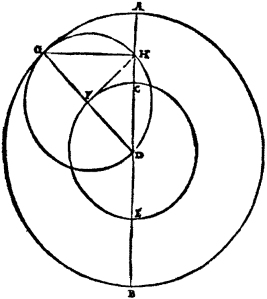
Copernican model, with it assumption of uniform circular motion, still could not explain all the details of planetary motion on the celestial sphere without epicycles
As a consequence, the Copernican model, with it assumption of uniform circular motion, still could not explain all the details of planetary motion on the celestial sphere without epicycles. The difference was that the Copernican system required many fewer epicycles than the Ptolemaic system because it moved the Sun nearly to the center and needed it for different reasons. In the Copernican system, it can be seen then that epicycles are unnecessary as a means to explain retrograde motion. His actual reason for this was because planetary observations indicated that even when the slowing down and speeding up of the observed planets due to retrograde motion was precisely accounted for, the planets still nevertheless did not seem to travel at uniform speed about the sun. Rather, the observations clearly demonstrated that they appeared to travel faster through space when closer to the sun and slower when further away from it. Indeed, this noted fact that the planets did not maintain a constant distance from the sun at all times in their orbits led Copernicus to offset his major orbital circles so that they were not precisely centered on the sun. Thus, in holding fast to his circles, and through his conviction that the speed of the planets was uniform, he was forced to retain small planetary epicyclical orbits as a subtle way to account for the continued presence of their apparent non-uniform motion about the sun. This was really nothing more though than a mathematical manipulation employed in order not to have to discard the primary aspects of his system; to allow it to better match actual observations; and also to allow him to claim that any observed non-uniform motion was not real, but illusory. A planet in orbit about the sun is travelling anti-clockwise in its epicycles and also anti-clockwise in its main orbital circle; the centre of the smaller circle moving in uniform motion upon the circumference of the larger circle. When positioned at P1 the combined speeds of both ‘orbital circles’ are pointed in the same direction and thus are added. The picture above (left) from the book III chapter 4 is often referred as a planetary model similar to al Tusi as it bears indeed some resemblance. However, its purpose is just to show “How the reciprocal movement or movement of liberation is composed of circular movements.
The models for inferior and superior planets of Copernicus are quite differently – shown below on the left (Venus) and below right (Mars).
I fail to see, why a heliocentric model using epicycles’ needs help of an geocentric mode using hypocycloids as some Islamic historians claim. This necessitates that the planet is at this moment travelling at its fastest in orbit about the sun. From this initial position, as the planet moves yet further about the sun on its main circle, the uniform speed of the planet in its epicycle is such that by completing half of its main orbit about the sun, reaching point P2, it has completed one full orbit of its epicycles. At this point, the main orbit is counter to the direction of that of the epicycles, and thus the planet, at its most extreme position from the sun, is travelling at its slowest. If one were to plot the actual path of one full orbit about the sun, the planet would be found to trace out an elongated circular path as opposed to an exact circle. Such is the result of combining two uniform circular orbits in the proscribed manner. Upon the issue of system accuracy, one should note that the Copernican system actually afforded mostly a lesser level of precision than that of the Ptolemaic system. Indeed, Copernicus’s continued use of epicycles was in fact necessary simply to allow it to achieve the same level of accuracy as was present under the Ptolemaic system. Without them, although the general ordering of the planets about the sun would have been correct, the predictive power of the system would have been even weaker.
Kepler’s breakthrough – the first physical correct model
Due to Ptolemaic system ability to fairly accurately predict the paths of the observable planets in the sky, it remained widely accepted well after Copernicus defined the heliocentric theory. Even then, Ptolemy’s system was still better able to explain the motions of the planets. Also Galileo’s support of a heliocentric theory of Copernicus model, was with the wrong arguments.
It was not until the later addition of Kepler’s laws of motion and elliptic orbits until the heliocentric theory fell neatly into place that and his model become of practical use. Only Kepler provided later the mathematic laws, and broke the 2000 year obeying usage of circles, which made the heliocentric model more accurate than the Ptolemaic model. Whether Earth centered or sun centered, it is impossible to know which if any is based upon truth. The Astronomia nova is a book, published in 1609, that contains the results of the astronomer Johannes Kepler’s ten-year long investigation provided strong arguments for heliocentrism and contributed valuable insight into the movement of the planets and provided better results and accuracy. The orbit of every planet is an ellipse with the Sun at one of the two foci. A line joining a planet and the Sun sweeps out equal areas during equal intervals of time. The square of the orbital period of a planet is directly proportional to the cube of the semi-major axis of its orbit. In 1623, Kepler at last completed the Rudolphine Tables. In 1628, following the military successes of the Emperor Ferdinand’s armies under General Wallenstein, Kepler became an official advisor to Wallenstein just like Tusi to the Mongolian emperor.
Science in Islamic dominated countriesb
There is no question that at that time astronomy and science flourished in the Islamic dominated countries. The truth it was based on the Chinese, Indian, and Christian roots and local intelligentsia in countries under Islamic control responsible not Islamic science. Coming back to Al Tusi. Syrian, Arabic and Persian Astronomers writing in Arabic at that time did certainly more than simply read and fine tuning Ptolemy. However, they never questioned geocentricity. According to the philosophers, celestial bodies were supposed to move in circles, the ideal form and with uniform speeds. But the complexity of Ptolemy’s attempt to explain the very un-uniform motions of planets and the Sun as seen from Earth was marred by corrections like orbits within orbits, known as epicycles, and geometrical modifications. Al-Tusi was just adding pairs of cleverly designed epicycles to each orbit to Ptolemy’s model.
Science in the Byzantine Empire
The Byzantine Empire, centered at Constantinople, maintained complex relations with the Eastern Orthodox Catholic Church. Within this reign, Greek remained a common language among the native tongues of the Syrians and Arabs. Because Greek continued to be spoken and scholars still had a direct access to many Hellenistic libraries. In fact, the era following the fall of Rome and preceding the rise of Islam was the age of Byzantium. The famous library at Alexandria was burned by invading Arabs in the 8th century. When we speak of the fall of the Roman Empire, we should not forget that in fact only the western portion of that empire succumbed to the Germanic invaders. In the east, the eastern Roman, or Byzantine, Empire stood for a thousand years as a citadel against the threats of expansion by the Muslims until 1453. The Byzantine Empire made great contributions to civilization: Greek language and learning were preserved for posterity; the Roman imperial system was continued and Roman law codified; the Greek Orthodox church converted some Slavic people and fostered the development of a splendid new art. Situated at the crossroads of east and west, Constantinople acted as the disseminator of culture for all people who came in contact with the empire. Called with justification “The City,” this rich and turbulent metropolis was to the early Middle Ages what Athens and Rome had been to classical times until it was laid in ashes. Little primary resources of Byzantium contribution to science are therefore available, and its place in the history has been written by the victors. In the early seventh century (610-645) Emperor Heraclius in Constantinople took an interest in astronomy and he, or his astronomer Stephanus produced a commentary on Ptolemy’s “Handy Tables”. It was not a climate that astronomy or any scientific study could thrive. Instead, the few educated people who could preserve some of the books and knowledge of the past, looked back on Ptolemy’s achievements in awe and reverence.
Arab Science
Early Arab science succeeded more in pragmatic applications as it did in theoretical concepts. However, a new empire was now expanding; this was the empire of Islam. The Prophet Mohammed (570-632) and his followers the Caliphs had built up a vast empire, which included Egypt, Syria and Mesopotamia. The common language of the empire was Arabic, the language of the Koran. The Abbasid Caliphs built themselves a new capital in 762, Baghdad. In this very early period, Arabic astronomy was influenced by Indian astronomy. Indian astronomy had been influenced by Greek ideas from the time of Alexander the Greats conquests in the east. From the 750’s onwards the use of paper was introduced into the Islamic dominated countries from China. This made books much cheaper to produce and encouraged scholarship.
The Renaissance which did not happen
Some scientists and historians call for an ”Islamic science”, but most argue successfully that a religious conservatism has dampened the skeptical spirit necessary for good science. ”Civilizations clash,” Islam is an example of that. As discussed before, some historians of a so-called Islamic astronomy – whatever that may be – believed that some knowledge developed at Maragha found their way to Europe (perhaps via Byzantium) and provided Nicolaus Copernicus (1473–1543) with inspiration for his usage of the Tusi Couples. In this case Al Tusi was a Persian scholar working for a Nestorian / Buddhist ruler, and is it needs to be noted, that even if this may be possible, the Tusi Couple have little to do with the real revolution of the heliocentric model not speaking with the introduction of the elliptic curves. Nor was the Tusi Couple central in Copernicus’ achievement, or his model more accurate. That does not chip anything away of the outstanding achievements of Al Tusi. The conservatives in Islamic culture up today still favor the geocentric model, never having the fundamental will to break up religion doctrine and science.
Conclusion
Geocentrism was not the result of a priori deduction from first principles, but rather the result of empirical observation and experience. It was the best hypothesis, given the data possible at the time. It was not until Kepler that a heliocentric model was developed that worked better; and not until Newton was there a reason to believe that it ought to be physically true. Don’t forget that the real revolution of Copernicus was the revelation of the earth not being the center of creation. Mathematical and empirically his system was inferior to the Ptolemaic system and a similar device as the Tusi couple was marginally used once. Mathematical and empirical it was Kepler and Newton who switched astronomy from the math department to the physics department, and people began to wonder if these purely mathematical models might be physically true. Ptolemaic astronomers had never claimed physical reality for their epicycles.
The attitude of conservative Muslims to science was not so much hostile as schizophrenic, wanting its benefits but not its world view. They may apply modern technology, but they don’t deal with issues of religion and basic science. One response to the invasion of Western science, in particular in the internet, has been an effort to ”Islamicize” science by portraying the Koran as a source of scientific knowledge. The requirement that Muslims face in the direction of Mecca when they pray, for example, required knowledge of the size and shape of the Earth. Astronomy in the East reached its zenith, at least from the Western perspective, in the 13th and 14th centuries, when al-Tusi and his successors pushed against the limits of the Ptolemaic world view that had ruled for a millennium. But the East had no need of heliocentric models of the universe and never went beyond. All motion being relative, it was irrelevant for the purposes of Muslim rituals – and is for all practical purpose of observation with the eye – whether the sun went around the Earth or vice versa. Among other things, the Islamic empire began to be whittled away in the 13th century by Crusaders from the West and Mongols from the East. Today, science still lags in the Muslim world, but a lot of money is spent to deconstruct and re-write science history a second time and bought by science and history ignorant media.
Sources: The Rise of Early Modern Science – Islam, China and the West, Huff, Toby E.
The Biographical Encyclopedia of Astronomers, Springer Reference. New York: Springer, 2007 (via web)
Astronomy and astrology in the medieval Islamic world, Edward Stewart Kennedy
Cosmos An illustrated history of astronomy and cosmology, John David North
On the revolution of heavenly spheres (Niclolaus Copernicus)
The Fontana history of astronomy and cosmology, John David North (German Translation)
Aristote au Mont-Saint-Michel, Sylvain Gouguenheim (German Translation)
Sources by excepts: Astronomy in the service of Islam,
David A. King Islamic astronomical instruments ,
David A. King A History of Arabic Astronomy, George Saliba Digital International Astrology Library
J. A. Boyle, “The Longer Introduction to the Zij-i Ilkhani of Nasir ad-Din Tusi”, Journal of Semitic Studies (1963)
E. S. Kennedy, A Survey of Islamic Astronomical Tables, Transactions of the American Philosophical Society

